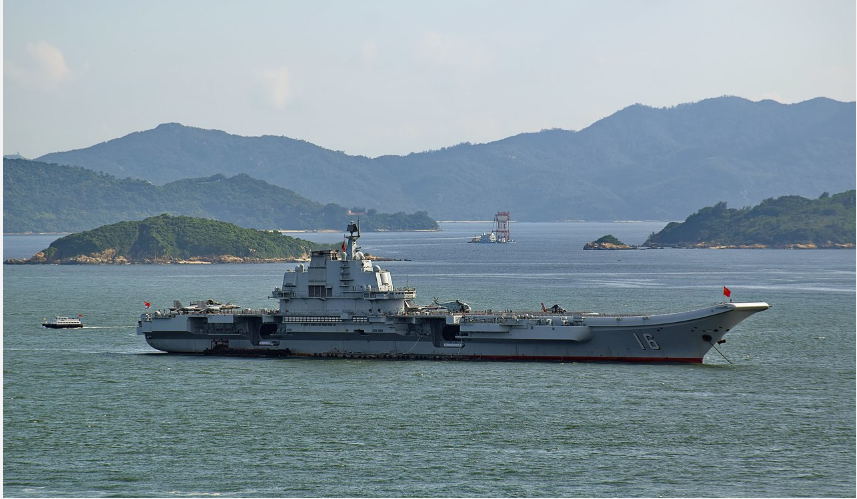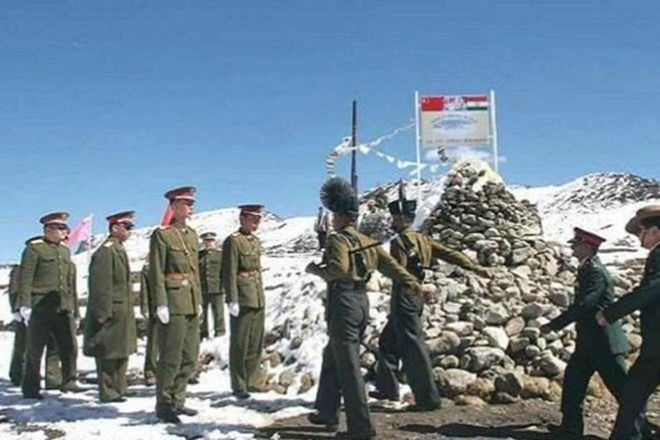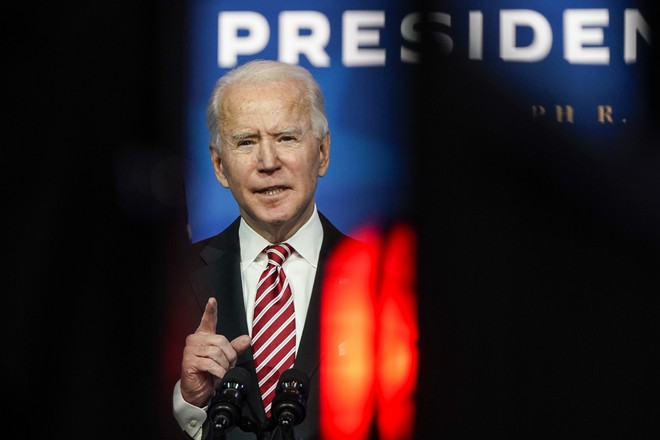New confrontation with China
US and China's confrontation with new cost to pay
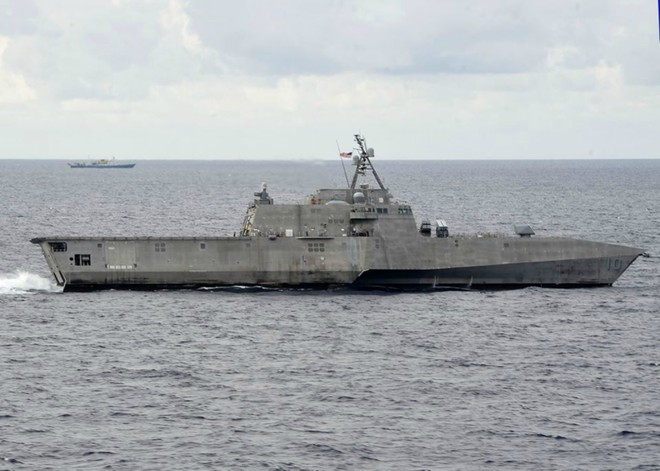 |
| Coastal combat ship USS Gabrielle Giffords (LCS 10) operates in the South China Sea US NAVY |
On the official Facebook account, Fleet 7 noted the USS Gabrielle Giffords was present in this area to enhance interaction with partners and act as a ready-to-respond force.
Earlier, the USS Gabrielle Giffords was present at the operation area of Malaysia's oil exploration drilling rig in the East Sea (South China Sea) to show support for a free and open Indo-Pacific region , according to the US Navy. In March, the amphibious assault ships USS America (LHA 6) and USS Gabrielle Giffords participated in joint combat drills in the East Sea (South China Sea).
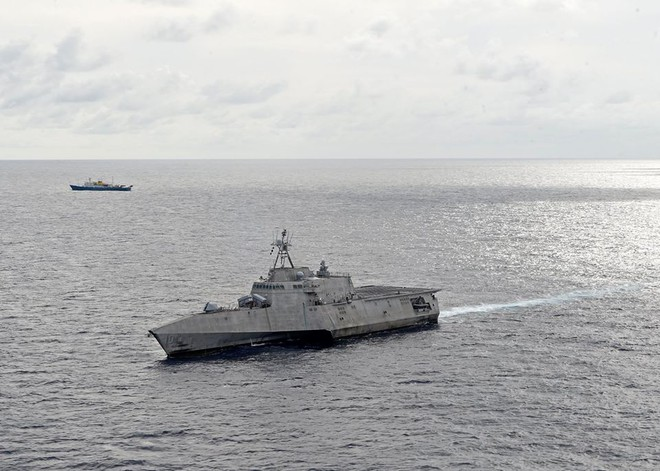 |
| Coastal combat ship USS Gabrielle Giffords (LCS 10) operates in the East Sea (South China Sea). Photo: US NAVY |
According to Asian Nikkei, China has being conducting military drills in the northern part of the Hoang Sa (Paracel) Islands that it has illegally occupied with live-fire drills beginning on July 1 and last until July 5.
China's Maritime Safety Administration announced the plan on June 28 stating that all vessels were prohibited from sailing in the area during that period. China has carried out military training near the Hoang Sa (Paracel) nearly every year in a bid to strengthen control of the area and make it irreversible, Asian Nikkei added.
China has recently carried out a series of aggressive activities in the East Sea (South China Sea) in the context of countries focusing on dealing with Covid-19 pandemic. Beijing dispatched the HaiYang 8 geological survey ship to enter Vietnam's exclusive economic zone, then followed closely the Malaysian drilling ship. Chinese ships also sunk Vietnamese fishing boats and Beijing unilaterally announced the establishment of administrative units in the East Sea (South China Sea), naming entities and banning fishing.
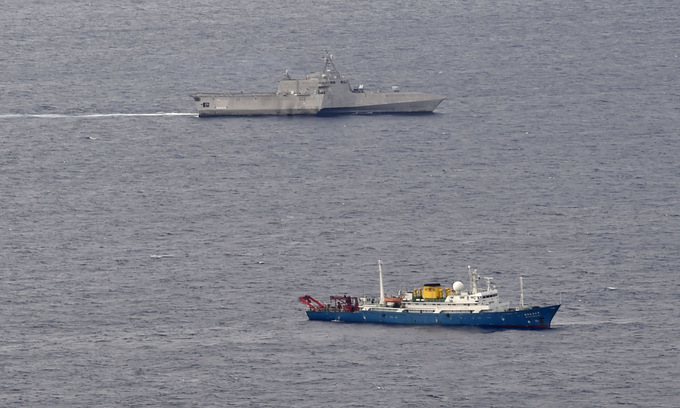 |
| US warships (above) followed Chinese exploration ships in the East Sea (South China Sea) on July 1. Photo: US Navy. |
US's true cost of a new confrontation with China
Writers Mark Hannah and William D. Hartung on an article named:" The true cost of a new confrontation with China" on the cnn said that:
Until now, much of the "new Cold War"-style mongering directed at China has been merely rhetorical. The US has not substantially increased its troop levels in East Asia as it once did in Eastern Europe, during the actual Cold War. There have been no clandestine efforts of late to topple unpalatable leaders in South Asia, as there once were in Latin America (as far as we know).
But this new initiative could be a game changer. Rep. Mac Thornberry of Texas, the top Republican on the House Armed Services Committee, insists "it is time to put our money where our mouth is." Given the appetite that mouth has had for armed conflict in recent decades, this is a horrible idea.
The PDI's financial costs are significant, but so are the costs of heightened confrontation with China -- as are those of launching another military endeavor that lacks the support of the American public. Eurasia Group Foundation polling shows a solid majority of US respondents support reducing America's military presence in Asia, not increasing it.
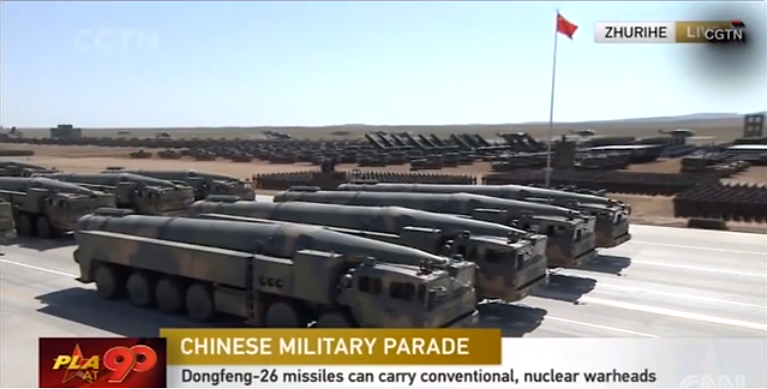 |
| China has made advances in military technology and has sparked concern among analysts with its assertive claims on islands, waters, and airspace in its vicinity, but the fact remains that China has enough problems at home. One analyst suggests that fully half of China's military is devoted to border or internal security, limiting its ability to project power beyond its borders, said in the article by Mark Hannah and William D. Hartung on CNN. |
How much money in this proposed buildup?
If the Senate Armed Services Committee has its way, the plan will cost nearly $7 billion over the next two years and billions more in the years to come. To lawmakers who pour money into the Pentagon's existing $738 billion budget, which exceeds the levels reached during the Korean and Vietnam wars, $7 billion might seem like peanuts -- but it's real money.
It would not be money well spent. The PDI is misguided and unnecessary. America's current military might, which also exceeds the peak of the Reagan buildup of the 1980s, is more than enough to address any military challenge posed by China. The US spends two and a half times more than China on its military, and there is no evidence China has ambitions to match or replace its global military machinery. China has made advances in military technology and has sparked concern among analysts with its assertive claims on islands, waters, and airspace in its vicinity, but the fact remains that China has enough problems at home. One analyst suggests that fully half of China's military is devoted to border or internal security, limiting its ability to project power beyond its borders.
Throwing more money at tools of military confrontation is not only a waste of resources, but it likely invites blowback. A major military buildup in East Asia would needlessly antagonize China at a moment when cooperation with Beijing should be the focus, as it's clearly necessary to address the global recession, current and future pandemics, and climate change.
The PDI's plans to increase US missile defense capabilities in East Asia are particularly alarming. Despite their benign name, missile defense systems are destabilizing weapons. They undermine the logic of deterrence by allowing a nation to launch an attack with less fear of a retaliatory strike. China opposed a 2017 effort to place a missile defense system in South Korea, fearing it could be used to increase US capabilities to attack China's own retaliatory missiles rather than defend against North Korean strikes. They're stunningly ineffective, besides. A former head of the Pentagon's office of operational testing and evaluation himself testified about tests of missile defense systems, "These tests are scripted for success, and what's been astonishing to me is that so many of them have failed."
Vietnam strongly objects to military drills violating the country's sovereignty over the archipelagos
Regarding information about the USS Gabrielle Giffords (LCS 10) coastal carrier carrying out routine operations and the Chinese survey ship HaiYang Dizhi Geological 4 entering the exclusive economic zone of Vietnam, Vietnamese Foreign Ministry spokeswoman Le Thi Thu Hang stated Vietnam's reaction.
Ms. Hang stated: “We believe that the activities of exploration, survey and scientific research in Vietnam's territorial waters determined by the 1982 UN Convention on the Law of the Sea (UNCLOS) requiring consent of Vietnam in accordance with the provisions of this Convention ”.
“Respecting the national sovereignty, sovereignty right and jurisdiction and the provisions of the 1982 United Nations Convention on the Law of the Sea are crucial for maintaining peace, stability, security and the cooperation for development of the East Sea region and the region, as well as in the world” Ms. Hang emphasized.
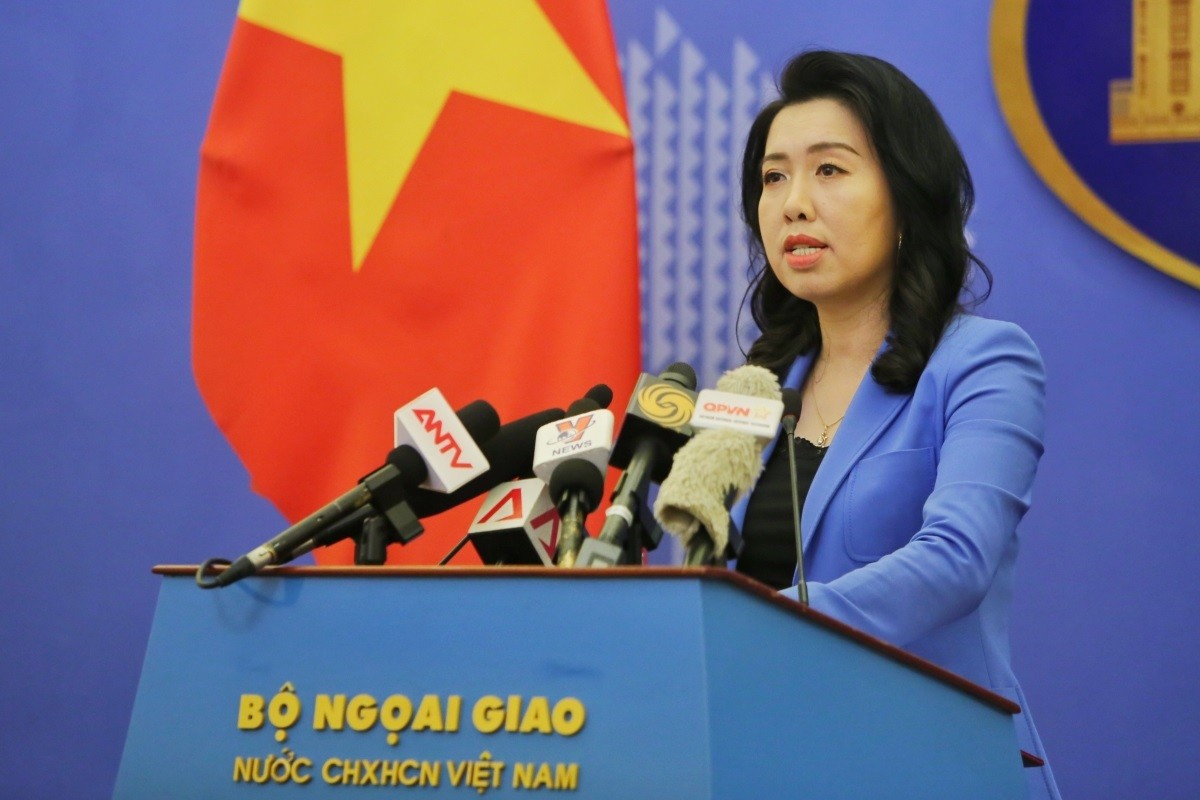 Seas and islands
Seas and islands
Vietnam Demands China Respect The Country's Sovereignty in East Sea
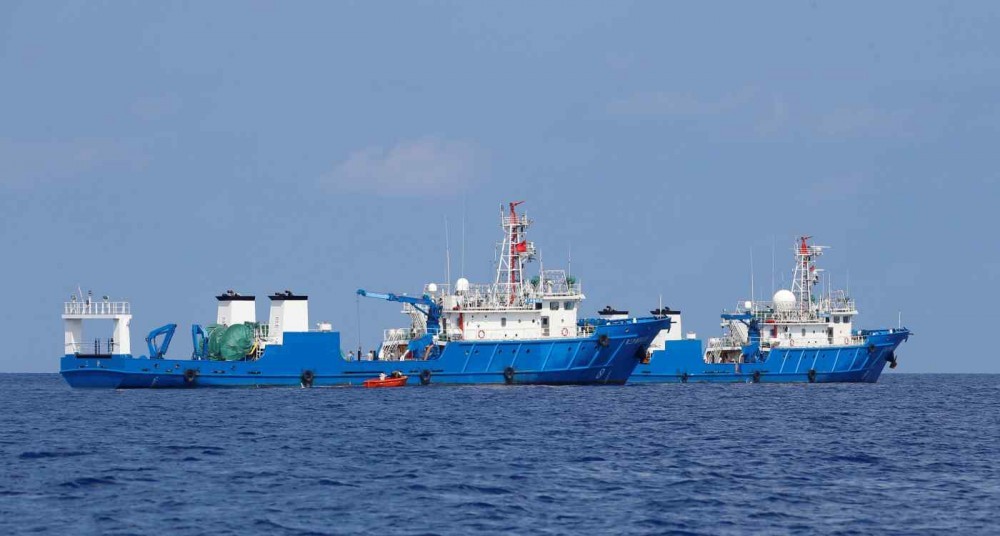 Focus
Focus
Promoting Substantive And Effective Code of Conduct in The South China Sea
Recommended
 Seas and islands
Seas and islands
Vietnam Endorses Common Voice on Ocean Jurisdiction
 Seas and islands
Seas and islands
Dialogue as Key to Settling Disputes and Advancing Law of the Sea
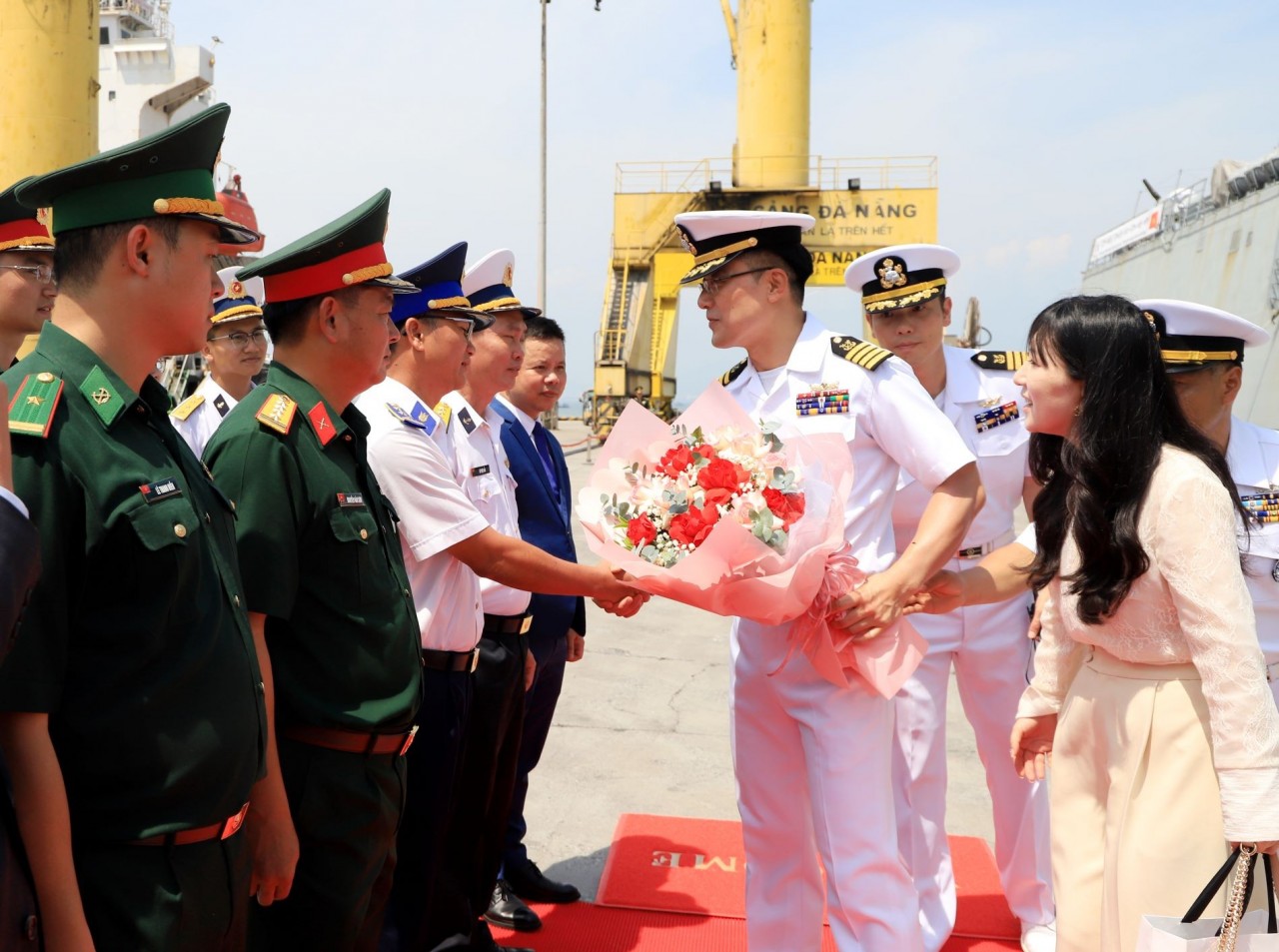 Seas and islands
Seas and islands
RoK Navy Ship Pays Friendly Visit to Da Nang City
 Seas and islands
Seas and islands
Naval Region 5 Promotes Reading Culture, Fosters Patriotism
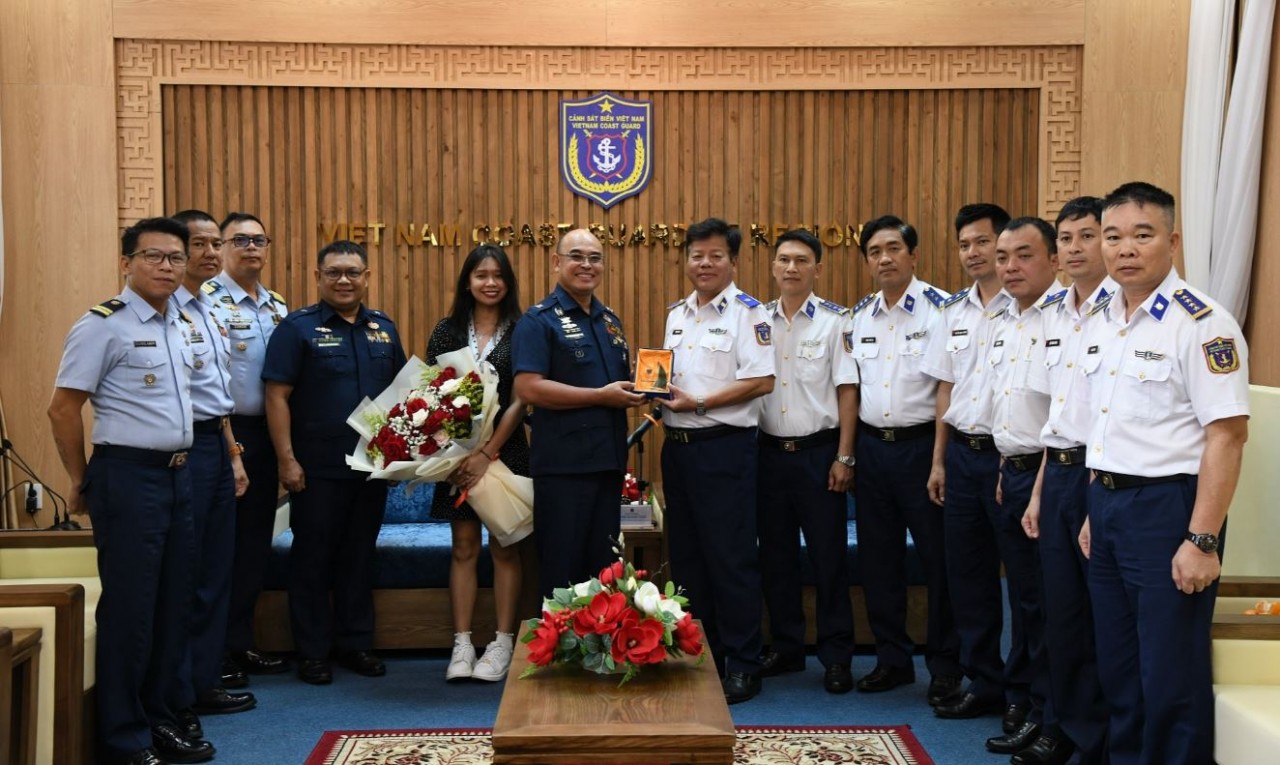 Seas and islands
Seas and islands
Coast Guard Region 2 Command Hosts Philippine Coast Counterpart
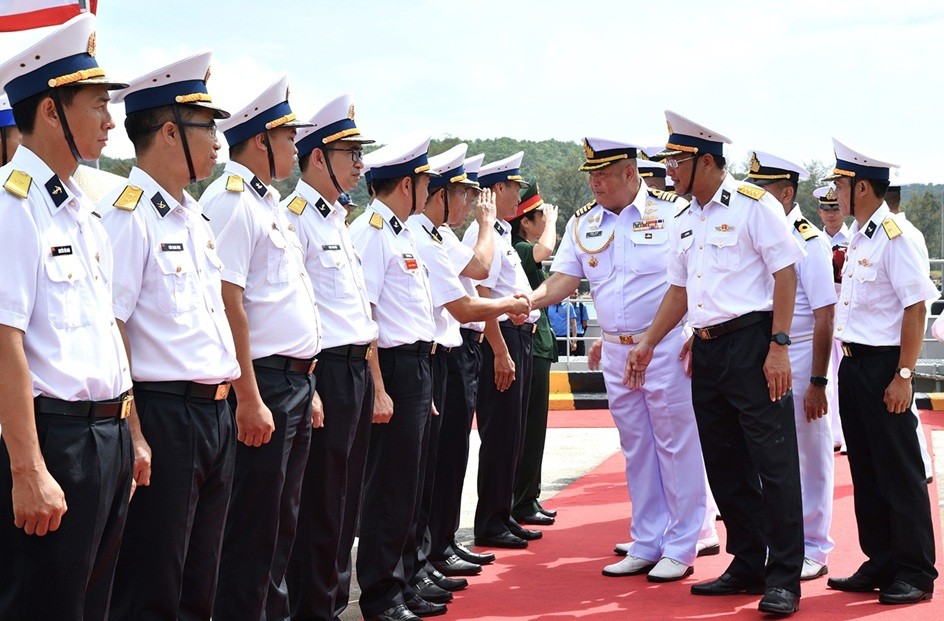 Seas and islands
Seas and islands
Vietnam - Thailand Navy: Coordination to Well Address Problems at Sea
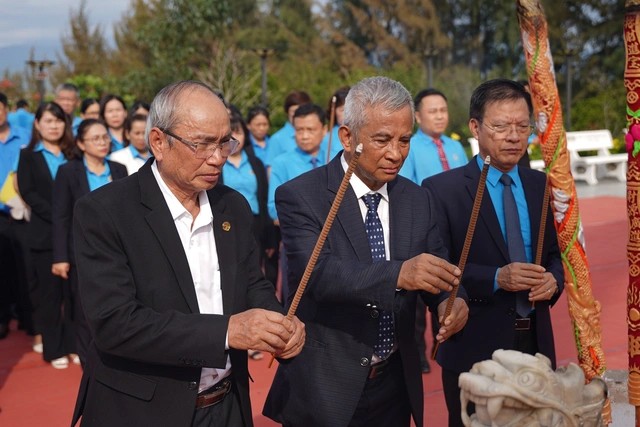 Seas and islands
Seas and islands
Honoring the Fallen: Incense Offering for the 37th Anniversary of Gac Ma
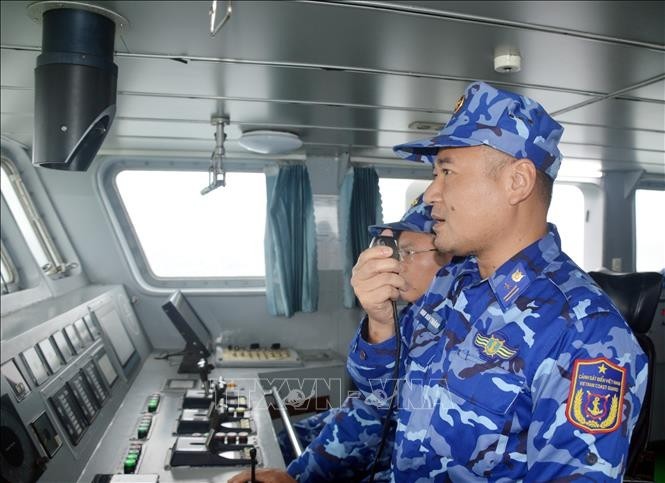 Seas and islands
Seas and islands



